Biomechanics: the human body as a mechanism
The word biomechanics seems to speak of medical science. That is not entirely wrong, but the role of engineering in biomechanics is as important as that of medicine.
The word biomechanics, like other words used by science, has its origin in the Greek and means mechanics of the living. However, by using this word we normally refer to the mechanics of the human body. That is, biomechanics investigates the movement of the human body.
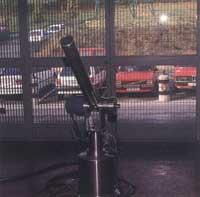
Undoubtedly, one of the functions of the human body is movement. As for movement, the human body is formed by a series of elements among which the relative movement is the one that gives the body its own mobility. In addition, this movement always has a similar structure: two different parts are joined by a joint that allows one or more relative turns between both parties. For example, our knee makes possible a single twist between the thigh and leg. The wrist allows two twists between arm and hand.
Thus, from the point of view of movement, we can say that the human body is a mechanism.
As a mechanism we can say that the human body has a branched structure or structure of the tree. This means that the mechanical structure of the body has the center or main element from which the secondary elements come out, of which they are tertiary, etc. In our case the main element is the torso, the secondary arms, the legs and the head, and the fingers and fingers of the third.
In addition to the advantage of biomechanics, it is always about analyzing the same mechanism, since all bodies have the same structure as seen as mechanism. The only thing that changes from person to person is the measure.
The barrier runner, height jumper, cyclist and astronaut you see in the image are calculated with the same model.
In the drawing you can see the model invented in the CEIT of Donostia to investigate the movement of the human body. 21 dots and 18 vectors have been used to define the position of the model, completing the 117 coordinate model. Once the necessary relationships between these coordinates are formed, the model presents 40 degrees of freedom or independent movement.
From the research point of view, biomechanics presents notable differences with other areas of mechanics. The movements that appear in other areas of mechanics are movements made by the machine, which we can call artificial. Therefore it is not difficult to repeat this movement on the computer.
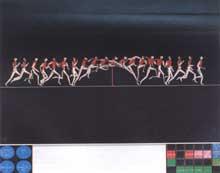
Things are not so definite as to the human body. Movements in nature are the result of many years of evolution and repeating with a formula is almost impossible. Therefore, another way of studying the movement must be sought.
The only place where we can look for the movements of the human body is the human body. And if we want to be exact, the movements of one body are only in that body because the movements of one person and another are different.
As you can see, the only possibility to analyze a person's movement is to measure or copy these movements of reality. And that is what is done.
To measure motion, images are usually taken with two or three cameras. The first thing that is rolled is the reference to determine the position of a camera with respect to the others.
Once this is done, it rolls with all the cameras that we have movement. Filmed images are included in the video. When the video image appears on the screen, the coordinates of the most important points are measured with xagua. Keep in mind that a point has three coordinates in the space and that in the image that appears on the screen, as it is launa, we can only measure two coordinates. We need at least two cameras to calculate these three coordinates. However, having more cameras is good for reducing errors. This on-screen data capture is called scanning, and in most cases it is the heaviest step in the process. Many times efforts have been made to make this step automatic, but the results obtained are not very good.
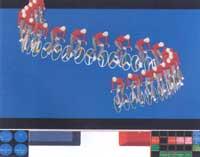
This data taken, although the process is done very carefully, often have errors and it is necessary to filter them to rule out differences that generate errors in the data using mathematical techniques.
After all this, the movement data is ready for our model to repeat the measured movement. And if the measured data is well measured, the movement of our model will be totally natural. In the photo you can see the barrier runner making an almost perfect jump. The filmed data are those of a world champion.
This work is not done so that the movement has an appearance of naturalness, but to make it a real movement, because from this study we want to extract real data. For example, to improve the movement of a runner. Taking our barrier runner as an example, it is known that vertical movements, although they need energy, are not useful for running faster. If we see the movement of the runner's head in the photo, it seems that the runner somehow knows this law, since his head leads a totally horizontal path.
Although usually not, some sports can have fairly simple and repetitive movements, and in these cases can be simulated on the computer without filming.
One of them is cycling. The movement to pedal is simple and always the same. In view of this, in the case shown in the picture, what has been done has been to speed the bike at first and, so to speak, throw it down the slope. The movement seen from there is originated by the existing forces without any experimental data.
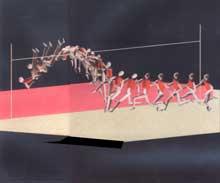
Finally, the other application of biomechanics is ergonomics. That is, the design of the space in which the person moves or works.
In the picture you can see an astronaut inside his boat. It is important that astronauts have to make as small and natural movements as possible to work, so that the time and effort needed are reduced.
Always looking to the future
It is difficult to really talk about the future, because it is an issue that seems to be fully integrated into the future. But the truth is that things are changing day by day and in research you cannot be looking at heaven.
On the one hand, the methods used to analyze the mechanisms are of great complexity, and in many cases the computer takes a lot to complete the study. Despite using the fastest computers and the best methods we have invented, complex dynamic studies can take many hours.
There are two ways to reduce this time. One, of course, use faster computers. In this sense we can say that the speed of computers doubles practically year after year, which reduces prices.
The other way that programs are faster is through faster algorithms, i.e. programs that require less time to perform the same job. Here too much work has been done and researchers are constantly inventing new methods. The ultimate goal is to get programs in “real time”. This means that our program is able to calculate the movement of the mechanism as quickly as it occurs. For example, if we want to do a car simulator, it is unacceptable for us to step on the brake and the computer needs half an hour to calculate that braking.
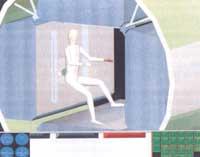
On the other hand, as already indicated, programs are increasingly complex. This means more work for the programmer, but also for the user, since it considerably increases the number of data to be entered. It is very important to make tools to enter this data. These tools are called interfaces and aim to make this program “user friendly”, that is, the program itself tells the user how the data is entered or what its errors are.
On the other hand, it is very important to have a good data output. The amount of data and numbers generated by these types of programs is enormous and the only way to represent them is by making graphs. The quality of the graphics is also improving very quickly and the images generated by the best existing graphics programs are almost inseparable from reality.
The concept that appears in the world of graphics and data output is “virtual reality”. Researchers working on this concept aim to create a new reality within the computer for the user. To achieve this, a different image is placed in each user's eye with special glasses and a three-dimensional image.
With the sound the same is done, with special headphones. And if the user puts on a special suit, so that the computer knows its position, it will be able to see in that virtual reality. This can be very useful, for example, to simulate a surgical operation by a doctor, but you will need to be careful with the psychological problems that you can pose without a doubt.
Apart from that, the future can give many new things in this field and in the world of research in general, but this article did not pretend to do what Jules Verne had done, and also, seeing was seen, it is increasingly difficult that the inventions of our imagination are ahead of reality.
Buletina
Bidali zure helbide elektronikoa eta jaso asteroko buletina zure sarrera-ontzian











